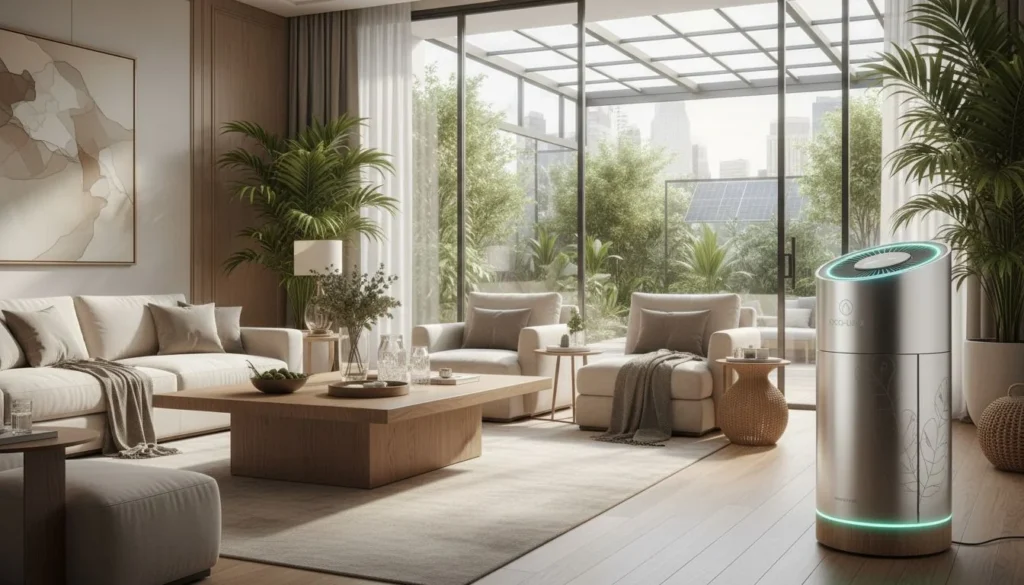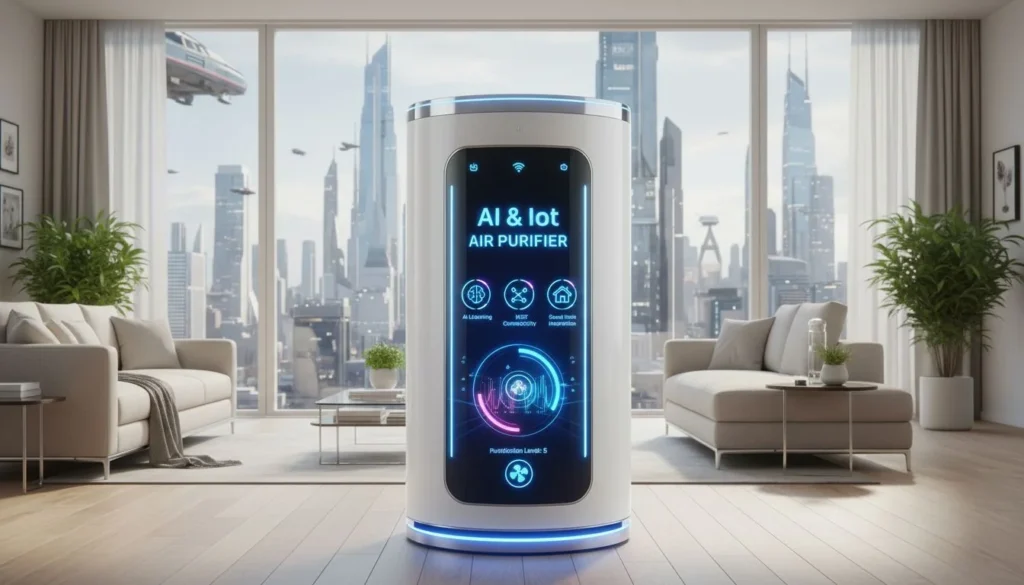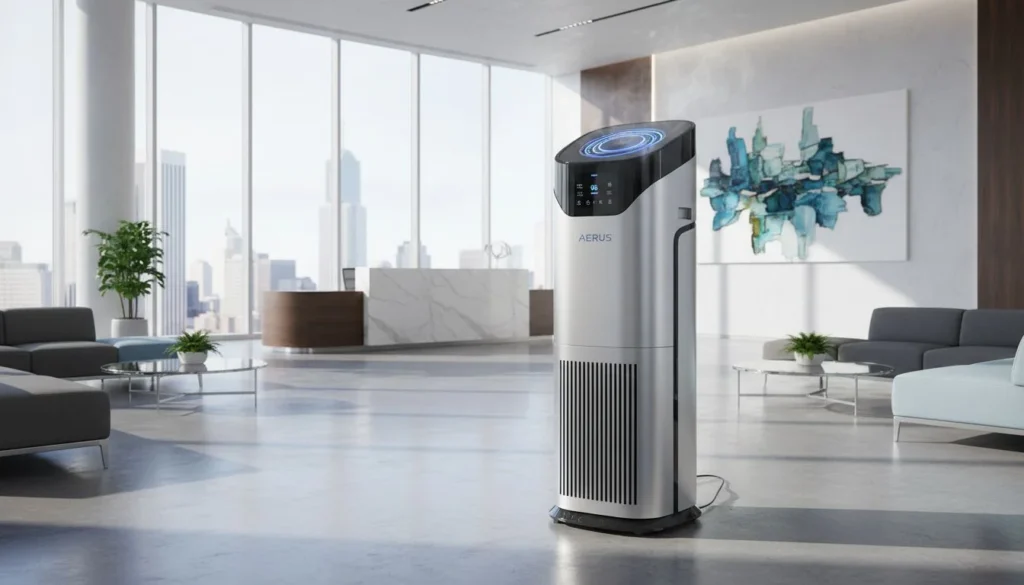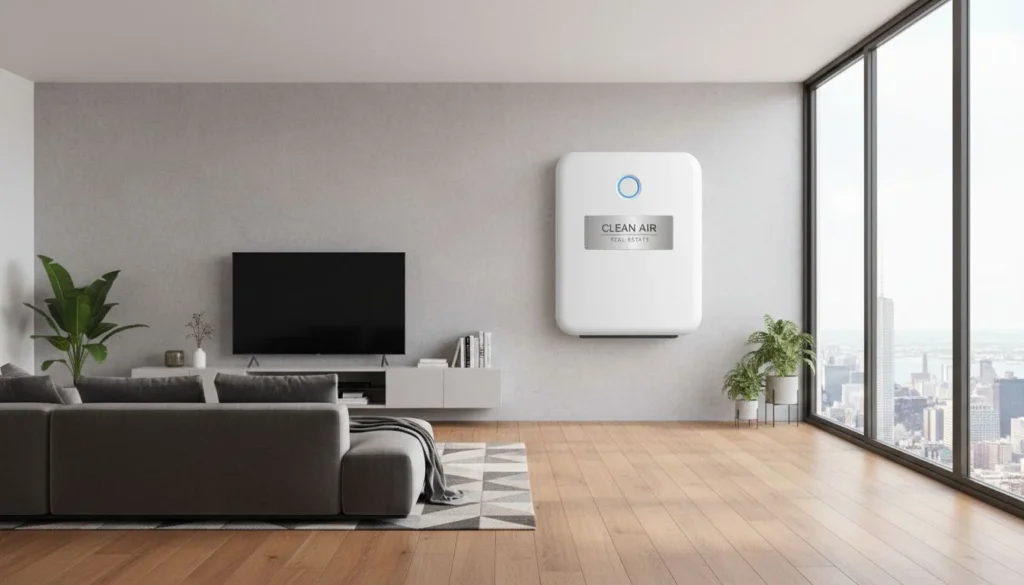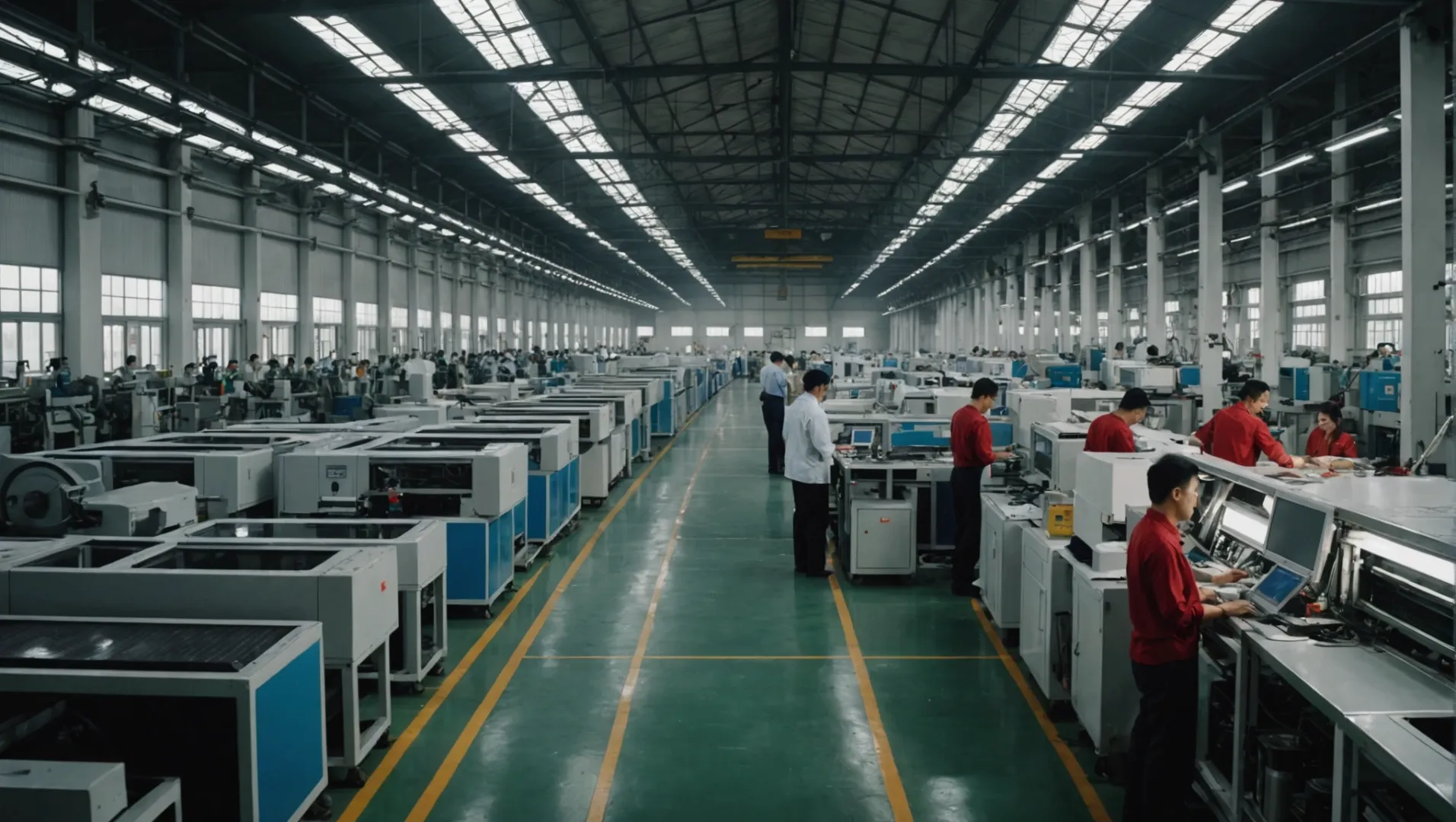
¿Ha pensado alguna vez en el origen de su purificador de aire? La necesidad de aire fresco ha aumentado mucho, lo que ha despertado la curiosidad sobre los mejores lugares de producción.
China sigue siendo el principal centro de producción de purificadores de aire debido a su cadena de suministro establecida y a su rentabilidad. Sin embargo, Vietnam se perfila como una alternativa viable que ofrece ventajas potenciales en medio de la cambiante dinámica del comercio mundial.
Aunque China ofrece una habilidad y una experiencia excelentes en la producción de purificadores de aire, Vietnam es una opción interesante, especialmente con los recientes problemas arancelarios y los cambios en la política mundial. Analice detenidamente los detalles de la fabricación en cada país para llegar a una conclusión acertada.
China tiene costes laborales más bajos que Vietnam para la producción de purificadores de aire.Falso
Los gastos laborales de China aumentan por el progreso económico; los de Vietnam siguen siendo más bajos.
¿Cuáles son las implicaciones económicas de fabricar en China frente a Vietnam?
Comprender los elementos de gasto que supone crear bienes en China en comparación con Vietnam es muy importante para las empresas que intentan mejorar sus planes de producción.
Los costes de fabricación en China son generalmente más bajos debido a una cadena de suministro bien establecida, aunque los aranceles pueden elevar los gastos. En Vietnam, los costes iniciales son más elevados, debido sobre todo a la dependencia de materiales importados, pero la posible reducción de aranceles y el futuro desarrollo de infraestructuras podrían equilibrar los gastos.
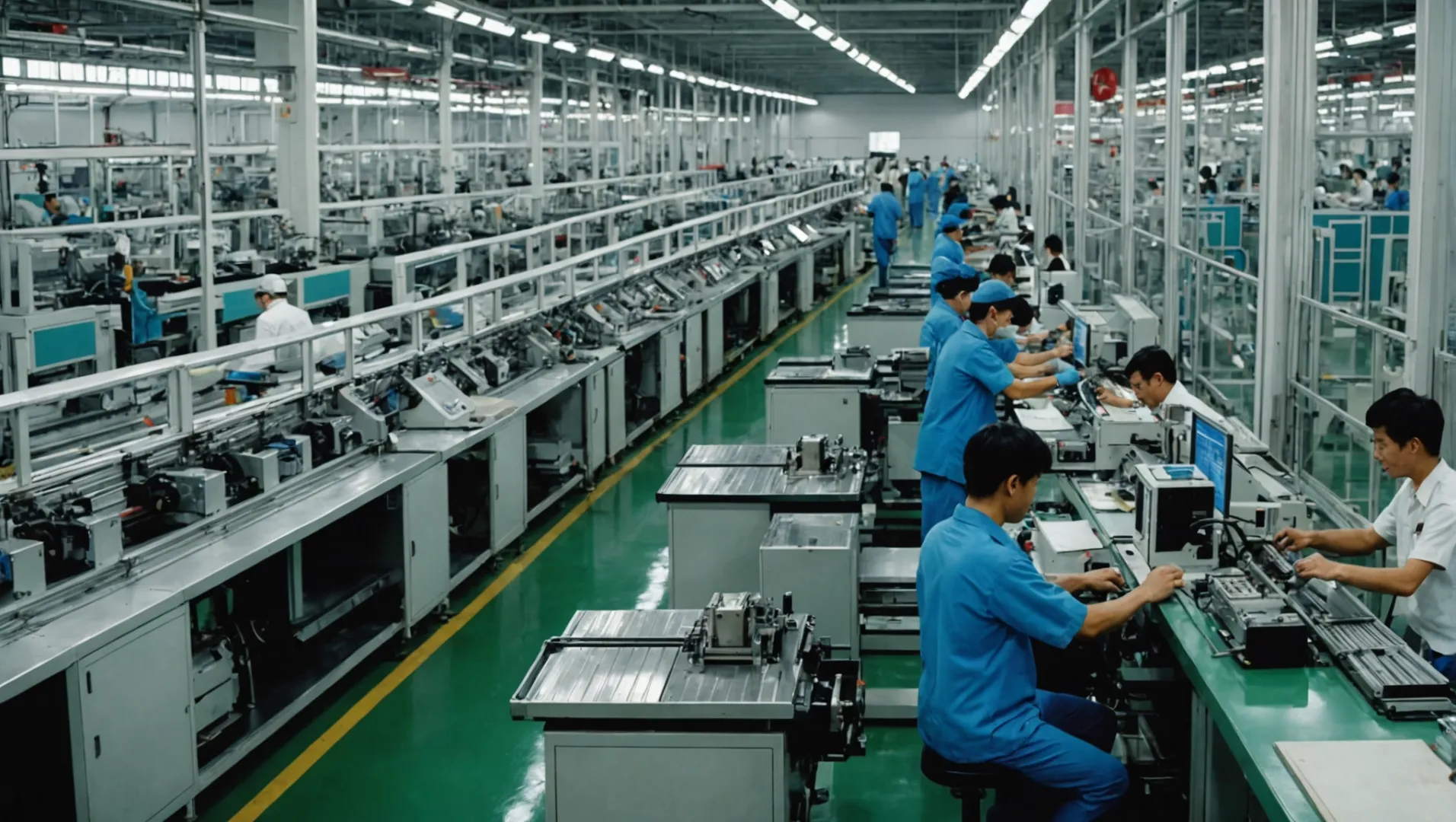
Evaluación de los costes laborales
Un factor importante a la hora de analizar los gastos de fabricación en China y Vietnam es la mano de obra. En China, los salarios han subido debido al crecimiento económico y a la mejora de las condiciones de vida. Aun así, China ofrece trabajadores cualificados y con mucha experiencia en la fabricación de productos electrónicos, textiles y limpiadores de aire.
Vietnam, por el contrario, presenta unos costes salariales más bajos debido a su economía en crecimiento. Esto lo hace atractivo para las empresas que quieren ahorrar dinero. Pero el inconveniente suele ser una mano de obra con menos experiencia, sobre todo en campos especializados como la producción de purificadores de aire.
Eficacia de la cadena de suministro
La sólida China red de suministro1 es una ventaja clave, ya que facilita el acceso a materias primas y piezas. Esta configuración acorta los tiempos de espera y reduce los gastos, lo que convierte a China en una opción sólida para la fabricación.
Por otro lado, la red de suministro de Vietnam sigue creciendo. Muchos materiales y piezas proceden de China, lo que provoca mayores gastos de producción. Sin embargo, Vietnam está gastando mucho dinero en mejorar sus infraestructuras, lo que podría mejorar su cadena de suministro en el futuro.
Impacto de la política arancelaria y comercial
Los aranceles a los productos chinos por parte de naciones como Estados Unidos han empujado a muchas empresas a buscar opciones como Vietnam. Aunque a primera vista pueda parecer más barato producir en China debido a los sistemas establecidos, estos aranceles pueden elevar mucho los costes.
Vietnam ofrece una forma de evitar esos aranceles, lo que posiblemente reduzca los gastos de las empresas que venden a determinados mercados. A medida que cambien las normas comerciales, Vietnam podría convertirse en un lugar más atractivo para la producción.
Consideraciones sobre los costes a largo plazo
A primera vista, producir bienes en Vietnam2 puede parecer caro debido a la dependencia de materiales importados y a unas infraestructuras menos desarrolladas. Pero a medida que aumente la inversión en zonas industriales y cadenas de suministro, la ventaja de costes de Vietnam podría crecer significativamente con el tiempo.
Sin embargo, a medida que cambia la política mundial, las empresas podrían ver ventajas en ampliar sus bases de producción para incluir a Vietnam. Este enfoque "China+1" está ganando interés, ya que las empresas buscan reducir los riesgos ligados a la dependencia de un solo país.
| Factores de coste | China | Vietnam |
|---|---|---|
| Costes laborales | Superior pero cualificado | Inferior pero con menos experiencia |
| Cadena de suministro | Bien estructurado y eficaz | Crece y depende de las importaciones |
| Impacto arancelario | Elevado debido a problemas comerciales | Bajar con escape arancelario |
| Infraestructura | Avanzado | Mejorar |
Tener en cuenta estos puntos puede ayudar a las empresas a elegir sabiamente dónde instalar sus fábricas, equilibrando los costes a corto plazo con los beneficios estratégicos a largo plazo.
Los costes laborales de Vietnam son superiores a los de China.Falso
Vietnam experimenta una reducción de los gastos laborales debido al crecimiento de su economía.
La cadena de suministro de China es más eficiente que la de Vietnam.Verdadero
China mantiene un sólido sistema de suministro, lo que acorta los plazos de entrega y reduce los gastos.
¿Cómo se comparan las infraestructuras de la cadena de suministro de ambos países?
Comprender la configuración de la cadena de suministro es importante para elegir un lugar inteligente donde producir purificadores de aire.
China cuenta con una infraestructura de cadena de suministro bien establecida para la producción de purificadores de aire, lo que garantiza la rentabilidad y la eficiencia. En cambio, la incipiente cadena de suministro de Vietnam aún está en desarrollo y depende en gran medida de las importaciones de China, lo que repercute en los costes generales de producción y logística.
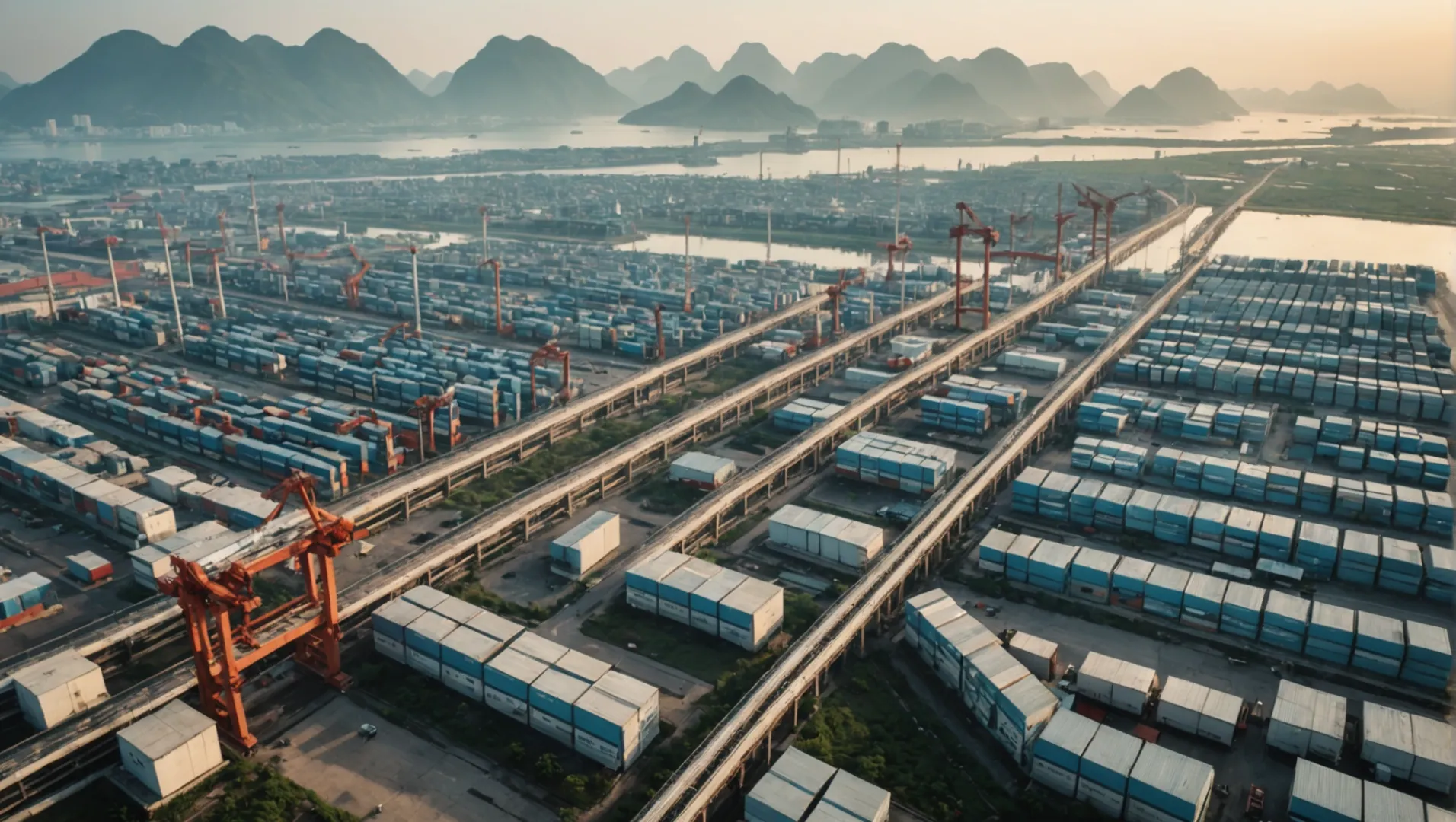
Panorama de la infraestructura de la cadena de suministro en China
El sistema chino de producción de purificadores de aire destaca por su amplio grupo de proveedores y redes de fábricas. Este sistema cubre todos los pasos de la producción, desde la búsqueda de materias primas hasta el ensamblaje de las piezas finales. Las fábricas chinas se benefician de su proximidad a proveedores clave3lo que reduce los gastos de transporte y los tiempos de espera.
Desarrollo de la cadena de suministro en Vietnam
Vietnam está empezando a construir un sistema de suministro de purificadores de aire similar al de China. En la actualidad, la mayoría de los materiales deben traerse de China, lo que ocasiona mayores gastos y tiempos de espera más largos. Sin embargo, existen esfuerzos para aumentar la capacidad de producción local de Vietnam. El gobierno de Vietnam está introduciendo planes para atraer inversiones extranjeras con el fin de construir una sólida base industrial que pueda llegar a ser autosuficiente.
Análisis comparativo: China frente a Vietnam
Cuadro: Principales diferencias en la infraestructura de la cadena de suministro
| Aspecto | China | Vietnam |
|---|---|---|
| Red de suministro | Amplia y bien organizada | Crecimiento y dispersión |
| Obtención de materias primas | Adquiridos localmente | En su mayoría traídos de China |
| Eficiencia de costes | Elevado debido a la producción a gran escala | Más bajo pero mejorando |
| Plazos de entrega | Corto | Más tiempo debido a las importaciones |
Impacto de los factores geopolíticos
Los actuales problemas comerciales entre China y Estados Unidos empujan a muchas empresas a buscar lugares como Vietnam como puntos de fabricación alternativos. Está ganando terreno la idea "China+1", según la cual las empresas permanecen en China y se expanden también a otras regiones para hacer frente a los riesgos relacionados con los aranceles y las tensiones políticas. Este enfoque podría acelerar el crecimiento de las infraestructuras de Vietnam si más empresas deciden invertir en cadenas de suministro locales.
Perspectivas de futuro
A medida que crece la rivalidad entre China y Vietnam, las infraestructuras de cada país pueden cambiar. China seguirá mejorando sus redes existentes, mientras que Vietnam se centrará en capacidades de construcción4 para reducir la dependencia de las importaciones. Ambas naciones tienen ventajas únicas, por lo que las empresas deben considerarlas en función de sus estrategias.
La cadena china de suministro de purificadores de aire no tiene rival.Verdadero
China posee un amplio grupo de proveedores, lo que reduce los gastos y los plazos de entrega.
Vietnam importa de China la mayoría de los componentes de los purificadores de aire.Verdadero
Vietnam depende de las importaciones porque su sistema de cadena de suministro aún está creciendo.
¿Cuáles son las normas de calidad de los purificadores de aire producidos en cada país?
Los purificadores de aire probablemente sean artículos domésticos importantes. Conocer las normas de calidad de los distintos países es fundamental para elegir bien.
Las normas de calidad de los purificadores de aire varían en todo el mundo, a menudo influidas por el entorno normativo y las prácticas industriales de cada país. China cumple las normas GB/T 18801-2015, que garantizan la eficiencia y la seguridad, mientras que Vietnam está adaptando sus normas a las expectativas internacionales a medida que crece su capacidad de producción.
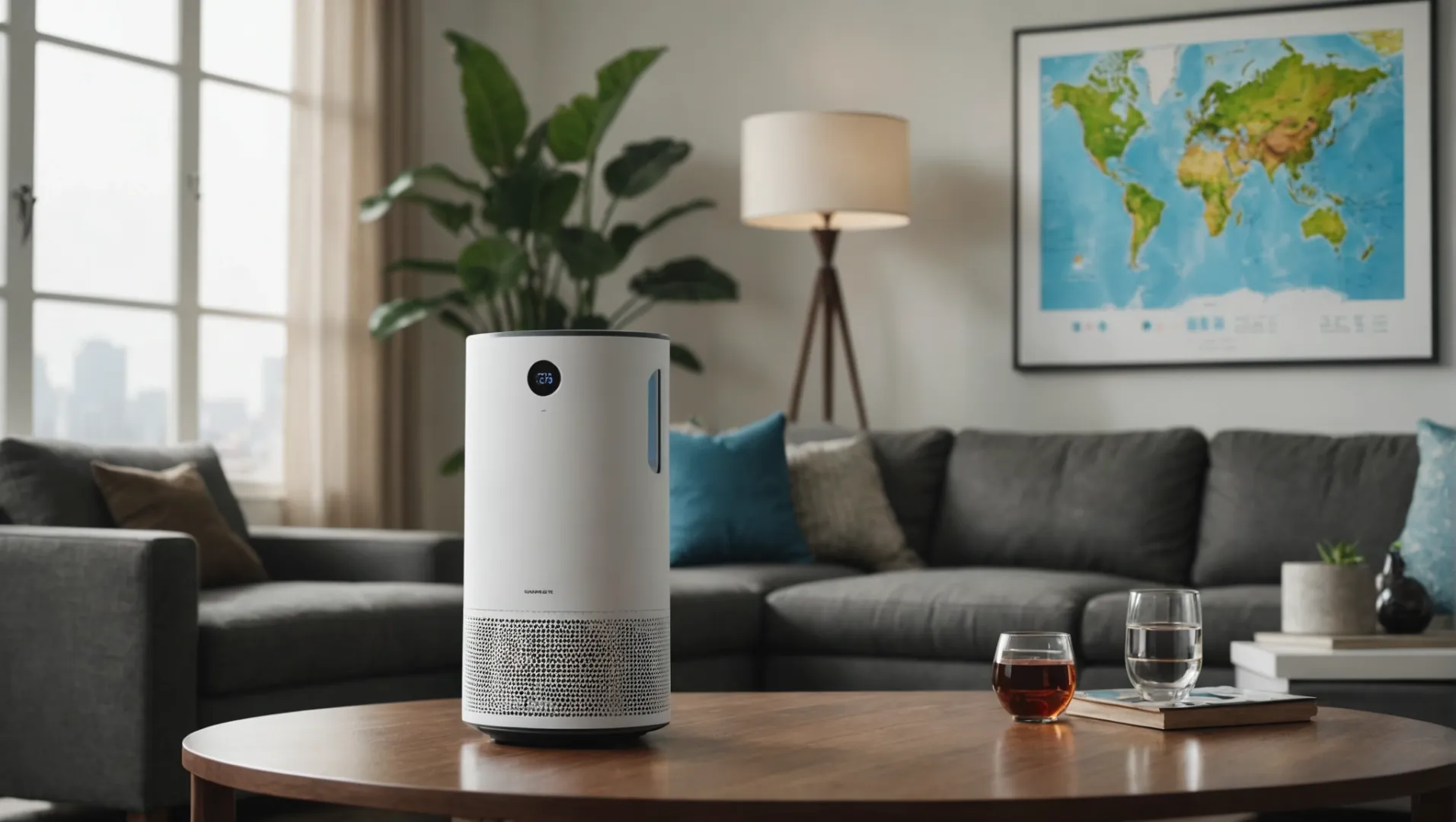
Conozca las normas chinas sobre purificadores de aire
China ha sido durante mucho tiempo el líder en la fabricación de purificadores de aire, con sus normas de calidad arraigadas en la directriz GB/T 18801-2015. Esta norma describe parámetros críticos como la tasa de suministro de aire limpio (CADR), los niveles de ruido y el consumo de energía. La mayoría de los fabricantes chinos cumplen estos directrices estrictas5 para garantizar que sus productos sean eficaces y seguros.
El nuevo marco de calidad de Vietnam
A medida que Vietnam intenta establecerse como centro de fabricación, el país trabaja en la elaboración de normas de calidad exhaustivas para los purificadores de aire. En la actualidad, Vietnam no tiene su propia norma nacional para purificadores de aire, pero sigue referencias internacionales como la ISO 16000 para la calidad del aire interior. Este enfoque ayuda a los fabricantes vietnamitas a producir dispositivos que cumplen las expectativas mundiales, aunque se prevé un mayor desarrollo de las normas locales.
Comparación de las medidas de garantía de calidad
Mientras que China ha establecido sistemas de ensayo y certificación, incluido el etiquetado obligatorio y los controles periódicos de conformidad, Vietnam está en proceso de crear infraestructuras similares. El siguiente cuadro ilustra las principales diferencias en las medidas de garantía de calidad entre ambos países:
| Aspecto | China | Vietnam |
|---|---|---|
| Norma nacional | GB/T 18801-2015 | Adopta normas internacionales como ISO |
| Instalaciones de ensayo | Amplia, con equipos de última generación | Desarrollo, con especial atención a la modernización |
| Control del cumplimiento | Inspecciones y auditorías periódicas | En curso |
Repercusiones industriales de las normas de calidad
Los distintos niveles de normas e infraestructuras establecidas influyen en la percepción de la calidad entre los purificadores de aire producidos en China y Vietnam. Tendencias del mercado mundial6 sugieren que, a medida que Vietnam refuerce sus marcos de calidad, podría ser más competitivo a escala internacional. Sin embargo, por ahora, los arraigados sistemas chinos ofrecen una fiabilidad en la que siguen confiando muchas marcas mundiales.
Consideraciones de los consumidores
Para los consumidores, conocer estas normas es crucial a la hora de elegir un purificador de aire. Los productos fabricados en China suelen percibirse como más fiables por su cumplimiento de la normativa establecida. Mientras tanto, los compradores que consideren productos vietnamitas deben buscar certificaciones de organismos internacionales reconocidos para garantizar la calidad del producto.
China sigue la norma GB/T 18801-2015 para purificadores de aire.Verdadero
Los purificadores de aire de China siguen la norma de calidad GB/T 18801-2015.
Vietnam tiene su propia norma nacional sobre purificadores de aire.Falso
Vietnam sigue ahora normas mundiales como la ISO, no las suyas propias.
¿Cómo afectarán las futuras políticas comerciales a la producción de purificadores de aire?
A medida que cambian las normas del comercio mundial, los fabricantes de purificadores de aire se encuentran con serios obstáculos y posibilidades. Comprender estos efectos es importante para una planificación cuidadosa.
Las futuras políticas comerciales podrían remodelar la producción de purificadores de aire al influir en las cadenas de suministro, los costes de fabricación y las asociaciones internacionales. Estos cambios pueden dar lugar a cambios en los lugares de fabricación, como una transición de China a Vietnam.
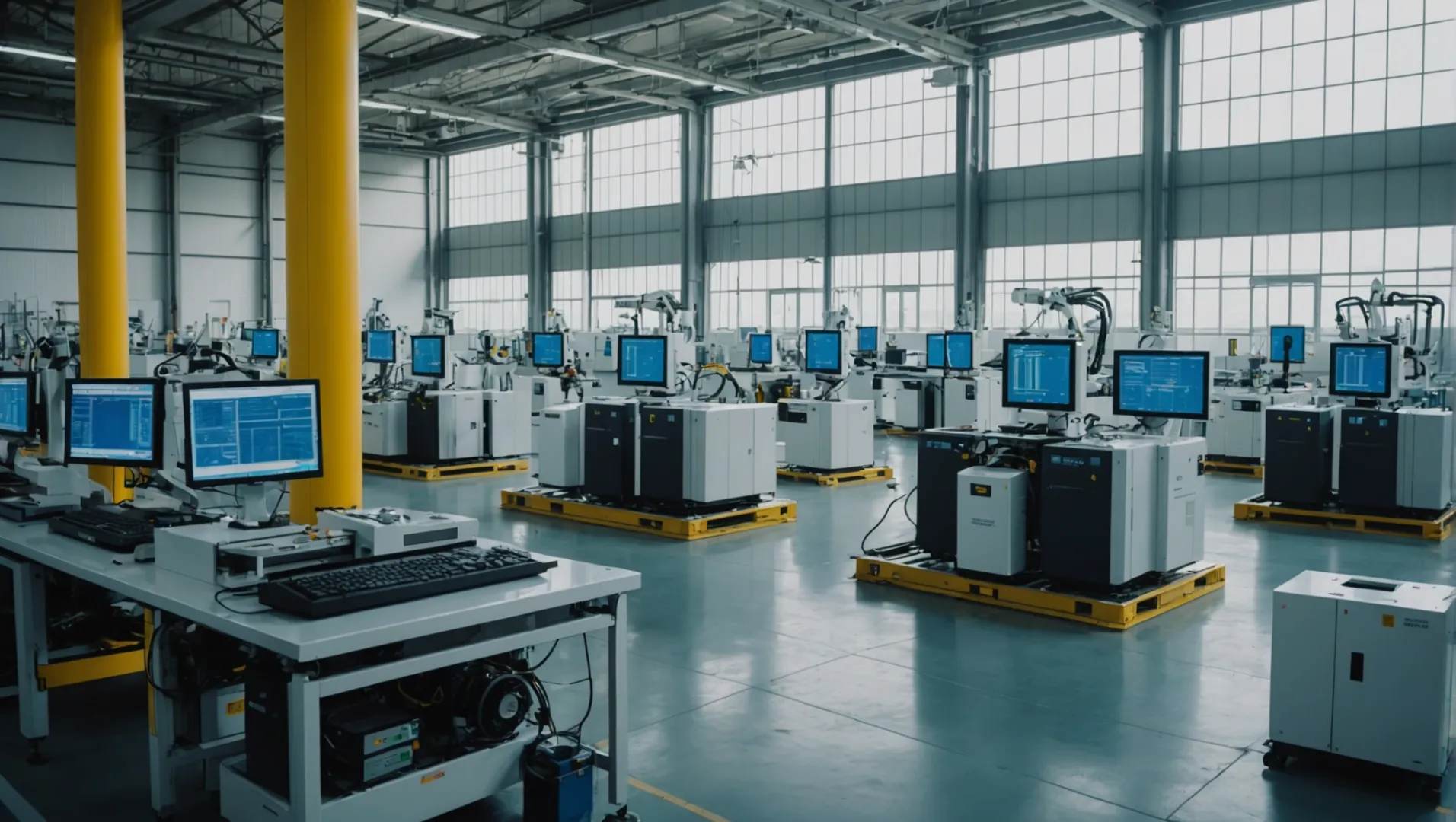
El papel de los aranceles y los acuerdos comerciales
Las normas comerciales, como los aranceles y los acuerdos comerciales, deciden de dónde y cómo proceden los purificadores de aire. Por ejemplo, Estados Unidos introdujo aranceles sobre los productos chinos durante la época de Trump, lo que hizo que muchas empresas se replantearan utilizar fábricas chinas. Esto ha empujado a las empresas a buscar en otros lugares como Vietnam.
Estrategia China+1
El plan "China+1" supone extender la producción fuera de China para evitar problemas de aranceles y cuestiones políticas. China sigue liderando la producción de purificadores de aire porque cuenta con una sólida red de suministro. Sin embargo, muchas empresas están empezando a invertir en fábricas en Vietnam.
Aunque Vietnam aún no dispone de una red completa de suministro de purificadores de aire, las futuras normas comerciales podrían fomentar el crecimiento de la infraestructura, ayudando a Vietnam a ser más competitivo. Aun así, al principio podría costar más debido a la necesidad de materiales procedentes de China.
Impacto potencial en los costes
| Factor | China | Vietnam |
|---|---|---|
| Costes arancelarios | Alto impacto potencial | Menor impacto inicial |
| Eficacia de la cadena de suministro | Establecido | Desarrollando |
| Costes de fabricación | Baja | 10-15% superior |
La tabla anterior muestra las diferencias de costes entre la producción de purificadores de aire en China y Vietnam. Las normas comerciales podrían modificar estas cifras, reduciendo quizá la carga de costes de Vietnam con el tiempo.
Consideraciones geopolíticas
La política mundial determina las normas comerciales, que a su vez modifican las opciones de fabricación. La actual rivalidad entre EE.UU. y China podría provocar nuevos cambios en las normas, lo que afectaría a las líneas de suministro mundiales. En este caso, la ubicación de Vietnam podría ayudar a las empresas a protegerse frente a estos cambios, tentándolas a situar la fabricación allí.
Tendencias del sector a largo plazo
En el futuro, las normas comerciales podrían impulsar una mayor producción local para reducir la dependencia de un solo país. Esto podría dar lugar a inversiones en nuevas tecnologías y mejoras en el sector de los purificadores de aire, creando una cadena de suministro mundial más sólida y variada.
En resumen, aunque China siga siendo importante en la fabricación de purificadores de aire, las próximas normas comerciales podrían cambiar mucho el panorama del sector, convirtiendo potencialmente a Vietnam en una opción sólida para la producción.
Los aranceles a los productos chinos aumentan el coste de los purificadores de aire.Verdadero
Los aranceles aumentan los gastos de las empresas que dependen de las fábricas chinas.
La cadena de suministro de Vietnam es más eficiente que la de China.Falso
China posee un sólido sistema de abastecimiento, mientras que el de Vietnam está creciendo.
Conclusión
Elegir entre China y Vietnam depende de las demandas actuales frente a la planificación futura. Evalúe los gastos, la preparación de la cadena de suministro y la orientación del mercado para determinar cuál se ajusta a los objetivos de su empresa.
-
Explore cómo la eficiencia de la cadena de suministro repercute en los costes de fabricación.: "Esta dinámica comercial ha ampliado el déficit comercial de Vietnam con China a $50 mil millones en 2023, un aumento de casi 50% en los últimos cinco años", ... ↩
-
Conozca las posibles ventajas económicas a largo plazo de Vietnam.: La industria manufacturera de Vietnam ha sido el epicentro del elevado crecimiento del país. Este sector contribuyó en más de un 20% al PIB del país. ↩
-
Explore la completa red de suministro de purificadores de aire de China.: El mercado de purificadores de aire de China se valoró en 2,54 mil millones de USD en 2023 y se espera que alcance los 3,78 mil millones de USD en 2029 con una CAGR de 6,8% durante el pronóstico ... ↩
-
Conozca las estrategias de Vietnam para mejorar la capacidad de fabricación local ..: Las principales empresas que operan en el mercado vietnamita de purificadores de aire son Sharp Electronics (Vietnam) Company Limited, Panasonic Vietnam Co. ... ↩
-
Explore las directrices de calidad establecidas en China para purificadores de aire fiables.: Esta Norma sustituye a GB/T 18801-2008 "Purificador de aire". Las principales diferencias técnicas entre esta Norma y la GB/T 18801-2008 son las siguientes. ↩
-
Descubra cómo evoluciona el mercado vietnamita con las nuevas normas de calidad.: El mercado vietnamita de purificadores de aire puede segregarse en función del tipo de filtro, el segmento de precios y el canal de ventas. En términos de tipo de filtro, el mercado ... ↩


